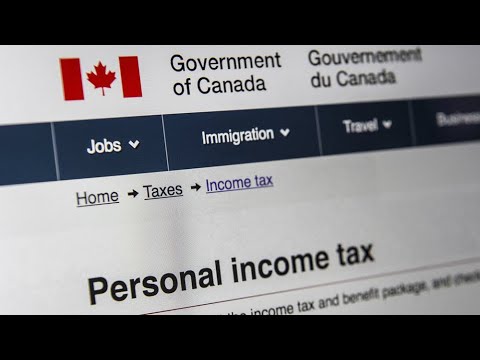Closing Entries Financial Accounting

The income summary account is a temporary account solely for posting entries during the closing process. It is a holding account for revenues and expenses before they are transferred to the retained earnings account. The expense accounts have debit balances so to get rid of their balances we will do the opposite or credit the accounts.
- All of Paul’s revenue or income accounts are debited and credited to the income summary account.
- However, it will provide a better audit trail for the accountants who review these at a later point in time.
- Once all of the required entries have been made, you can run your post-closing trial balance, as well as other reports such as an income statement or statement of retained earnings.
- The general ledger is the central repository of all accounts and their balances, including the closing entries.
- The purpose of closing entries is to prepare the temporary accounts for the next accounting period.
The longer process requires temporary accounts to be closed in an intermediate income summary account first and then that account is zeroed out to the retained earnings. The result in both cases is the same and depends on the bookkeeper’s preference or company’s policy on it. These are general account ledgers that show balances recorded over multiple periods. These will usually include all balance sheet items like assets, liabilities and equity accounts.
Why You Can Trust Finance Strategists
On the balance sheet, $75 of cash held today is still valued at $75 next year, even if it is not spent. Once you have completed and posted all closing entries, the final step is to print a post-closing trial balance, and review it to ensure that all entries were made correctly. The accountant can choose either method as eventually all the accounts will be transferred to the retained earnings account on the balance sheet. And so, the amounts in one accounting period should be closed so that they won’t get mixed with those in the next period. For partnerships, each partners’ capital account will be credited based on the agreement of the partnership (for example, 50% to Partner A, 30% to B, and 20% to C).

By maintaining your bookkeeping, you can ensure that you are constantly kept informed. As well as being consistently up-to-date on the financial health of your business. Advisory services provided by Carbon Collective Investment LLC (“Carbon Collective »), an SEC-registered investment adviser. Closing entries help in the reconciliation of accounts which facilitates in controlling the overall financials of a firm. This challenge becomes even more daunting as your business expands. Manual processes struggle to handle the increasing volume of financial transactions and complexities.
How to create closing entries
A temporary account accumulates balances for a single accounting period, whereas a permanent account stores balances over multiple periods. A closing entry is an accounting entry that is used to transfer the balances of temporary accounts to permanent accounts. The purpose of closing entries is to prepare the temporary accounts for the next accounting period. A closing entry is a type of accounting journal entry that is made at the end of an accounting period. The purpose of this entry is to zero out all temporary accounts so that they are ready to be used in the next accounting period. In simple words, closing entries are made to close the books for an accounting period.
Understanding Subledgers and Why You Need Them – The Motley Fool
Understanding Subledgers and Why You Need Them.
Posted: Wed, 18 May 2022 17:04:23 GMT [source]
If you’re using the wrong credit or debit card, it could be costing you serious money. Our experts love this top pick, which features a 0% intro APR for 15 months, an insane cash back rate of up to 5%, and all somehow for no annual fee. Here we see that total expenses for both were $9,650 for January 2020. We follow strict ethical journalism practices, which includes presenting unbiased information and citing reliable, attributed resources. K.A. Francis is a freelance writer with over 20 years experience, and a small business consultant and jewelry designer.
Step 1 – closing the revenue accounts:
One of the most important steps in the accounting cycle is creating and posting your closing entries. The fourth entry requires Dividends to close to the Retained Earnings account. Remember from your past studies that dividends are not expenses, such as salaries paid to your employees or staff. Instead, declaring and paying dividends is a method utilized by corporations to return part of the profits generated by the company to the owners of the company—in this case, its shareholders. As you will see later, Income Summary is eventually closed to capital. This will decrease retained earnings by the amount of the dividend payout and zero out the balance in the dividends account, preparing it to begin as a blank slate during the next fiscal year.
In summary, permanent accounts hold balances that persist from one period to another. In contrast, temporary accounts capture transactions and activities for a specific period and require resetting to zero with closing entries. If your business is a sole proprietorship or a partnership, wave invoicing on the app store your next step will be to close your income summary account. You can do this by debiting the income summary account and crediting your capital account in the amount of $250. This reflects your net income for the month, and increases your capital account by $250.
How to Record a Closing Entry
The dividend closing entry records any dividends to be distributed to the shareholders. The income summary account (or income summary report) is a special account created to facilitate the closing process and to leave an audit trail. Because the income summary account is an optional step in the closing process, some firms choose to skip it and close all accounts out to retained earnings.
- Whether you’re processing closing entries manually, or letting your accounting software do the work, closing entries are perhaps the most important part of the accounting cycle.
- You should recall from your previous material that retained earnings are the earnings retained by the company over time—not cash flow but earnings.
- When closing expenses, you should list them individually as they appear in the trial balance.
- The result in both cases is the same and depends on the bookkeeper’s preference or company’s policy on it.
- Whatever accounting period you select, make sure to be consistent and not jump between frequencies.
- To close the expense accounts for Bob, we need to debit the income summary account and credit all the relevant individual expenses accounts such as utilities expense, wages expense depreciation expense, etc.
Imagine you own a bakery business, and you’re starting a new financial year on March 1st. Instead the balances in these accounts are moved at month-end to either the capital account or the retained earnings account. It’s important to note that neither the drawing nor the dividends accounts need to be transferred to the income summary account. Corporations will close the income summary account to the retained earnings account.
What are Closing Entries?
There are various journals for example cash journal, sales journal, purchase journal etc., which allow users to record transactions and find out what caused changes in the existing balances. Closing entries are mainly used to determine the financial position of a company at the end of a specific accounting period. This will zero out the balance in each of the expense accounts and transfer it to the income summary account.
Closing journal entries are made at the end of an accounting period to prepare the accounting records for the next period. They zero-out the balances of temporary accounts during the current period to come up with fresh slates for the transactions in the next period. At the end of an accounting period when the books of accounts are at finalization stage, some special journal entries are required to be passed. In accounting terms, these journal entries are termed as closing entries. The main purpose of these closing entries is to bring the temporary journal account balances to zero for the next accounting period, which keeps the accounts reconciled. Once adjusting entries have been made, closing entries are used to reset temporary accounts and transfer their balances to permanent accounts.
Four Steps in Preparing Closing Entries
These entries help in understanding a company’s profitability, making decisions, and in preparing budgets. So if you are an accountant or someone interested in learning about accounting, it is important to understand the concept of closing entries. Whether you credit or debit your income summary account will depend on whether your revenue is more than your expenses. Because expenses are decreased by credits, you must credit the account and debit the income summary account. Accounting software automatically handles closing entries for you. If you don’t have accounting software, you must manually create closing entries each accounting period.
